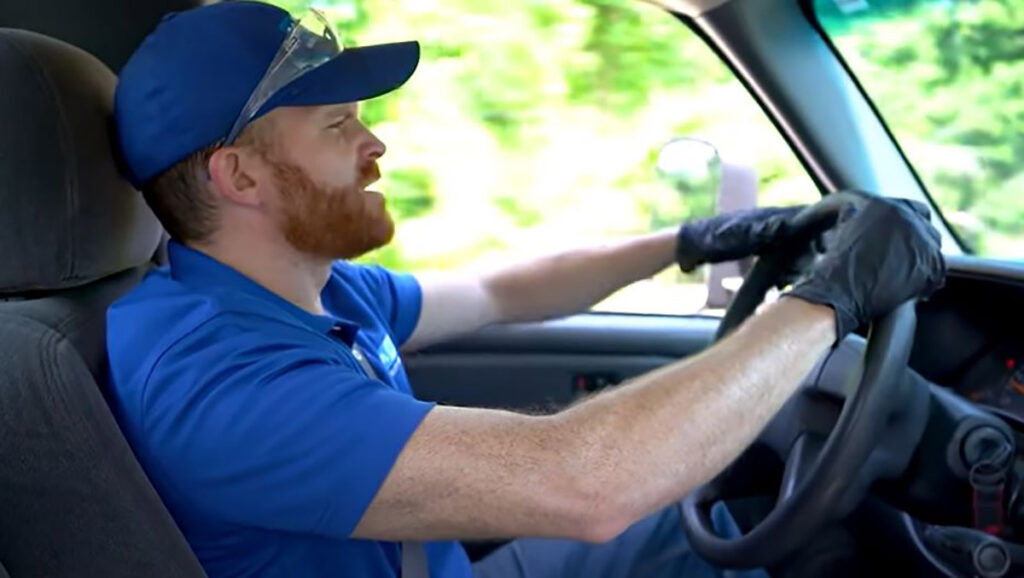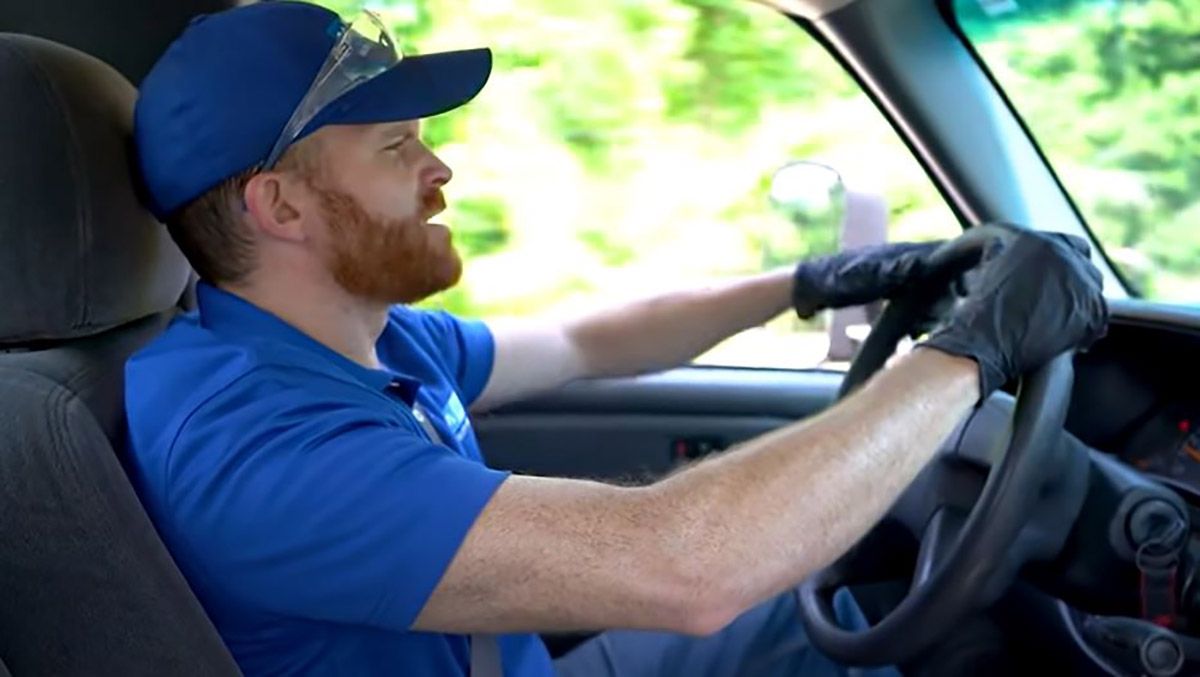If you feel shaking or pulling in the steering wheel that increases when accelerating, you may have a seized brake caliper or another problem with the brake system. This guide and video explains what methods to take, how to check the brake system when this happens, and how to check the brake caliper if it’s seized, stuck, or leaking.
Diagnose a Pulling or Shaking Steering Wheel: Check the Brakes, Wheels, and How to Check for a Seized Brake Caliper
What to Do If the Steering Wheel Is Shaking or Pulling: How to Check the Brakes and a Seized, Leaking, or Stuck Brake Caliper

How to Check the Brake System for a Pulling or Shaking Steering Wheel
- Check the Temperature of the Brakes

If you feel the steering wheel pulling or shaking that worsens when you accelerate, there is a problem at the front of the vehicle if you can’t feel it shake throughout the entire body. You can check temperature of the brakes right after driving, which will tell you if the issue is with the brake system.
Check the temperature and make sure it isn’t too hot depending on how long you’ve been driving. If the temperature is not too high on one side, test the other side. If one side is significantly hotter than the other, it’s a sign there’s something wrong with the brakes. - Check for Contaminated Brake Fluid
Contaminated brake fluid could cause a shaking or pulling steering wheel. If you haven’t replaced the brake fluid in a few years, it’s generally good idea to. Flush the entire system to remove all debris and contamination, and use the right brake fluid. The wrong fluid could cause more damage to the brake parts.

Make sure the brake fluid you’re using is in good condition and not opened. With new brake fluid, make sure the protective covering is removed properly. If it’s punctured and broken for example, it could push in debris in the fluid, which will later enter system. - Spin and Shake the Wheels to Check for Binding and Excessive Play

Raise and secure vehicle and then spin the wheels. Feel how well they spin and check for resistance.
Grab the tire from the 3 and 9 and then the 12 and 6 o’clock positions. Push the tire in and out. Feel for excessive play, which might indicate there’s a worn or loose steering part. Do this on both sides. - Check the Brake Rotor

Try to turn the brake rotor and feel for restrictions. If there is restriction, the caliper piston might be seized, or there could be another problem like a rusted or worn wheel bearing. - Check the Brake Flex Hose

Check brake flex hose, which is the hose that travels from the brake lines to the brake caliper. Look for swelling on the cuplers and the brake hose bracket, since that will restrict travel of fluid to and from the brake caliper.
Make sure the brake hose is not broken, damaged or swollen, and remove any protective coverings that may be covering the brake hose. - Bleed the Brakes to Test for a Fluid Leak or Restriction in the Brake Lines

Check the bleeder screw on the brake caliper. Remove the protective covering and open the bleeder screw. Look for a steady trickle of fluid, meaning gravity is drawing fluid from the master cylinder through the lines to the caliper. If there’s no fluid leaking, there is a restriction in the lines above the calipers - Check for a Seized Brake Caliper: Check the Brake Caliper Piston

To check the caliper, you can restrict flow from the brake flex hose with hose-line crimpers to apply pressure. Open bleeder valve and you shouldn’t see fluid trickle out.
Push the brake pad in with a screwdriver to push in the caliper piston. Do this with valve open and if no fluid comes out (quite a bit should), it means there is an issue with the caliper and it needs to be replaced.
Close the bleeder valve and remove the clamps from the brake lines. - Check for a Seized Brake Caliper: Check the Caliper Slide Pins

If the brake caliper’s slide pins are dry or rotted, it will cause a restriction and cause the brake caliper to malfunction. With the slide pins removed, then remove the brake caliper and add grease to the slides if needed. - Check the Condition of the Brake Pads

With the brake caliper removed, check the brake pads, which should be inside the brake caliper bracket. Brake pads can stick to the bracket but they should be able to slightly flow and push in and out. If they are stuck, it can cause brake drag, which will cause a pulling or shaking steering wheel.
Check the condition of the braking material on the brake pad. If the material and brake rotor is shiny like a mirror, that’s a sign that the pads are overheated and may be sticking to the rotor. If the pads are low or the material and rotor is too smooth, replace them. Glazed or low brake pads won’t be able to provide enough friction to stop effectively.
The pads may have been stuck in the bracket, causing this issue, or they may have been stuck from a broken brake caliper. If the piston can’t release the brake pads from the brake rotor, they can overheat the brakes and while overheating, expand, increase pressure on the brake, and cause a shake in the steering wheel.
If the hub twists fine with the rotor, the wheel bearing is not the cause, and this means that caliper should be inspected further.

How to Check a Seized or Leaking Brake Caliper
A seized, very slow moving, or leaking caliper piston are symptoms of a damaged or seized brake caliper. In many cases, the entire caliper will need to be replaced. There is a restriction in the caliper if the piston can’t move out, and if it’s leaking, the brake caliper has damaged seals. You can check these components yourself and possibly replace them yourself, but replacing the entire brake caliper is an easier and more common route. Follow these steps to inspect the caliper piston and seals, as some parts like a swelled seal can indicate brake fluid contamination.
Remove the Brake Caliper Piston

Apply air pressure to back of caliper where brake line enters to push the piston out. If it doesn’t budge, it means the piston isn’t releasing when brake pedal is pressed and you’ll need to replace caliper. Place piece of wood or caliper piston tool to reduce impact and the piston should come right out. Be careful, since there could be brake fluid inside. A seized piston won’t pop right out, and this means you’ll need to replace the brake caliper.
Check the Brake Caliper Piston and Bore for Rotting or Damage

With the piston removed, inspect the bore and the piston for damage or rot. Rot could damage the piston and freeze or seize it. The inside of the piston may be rotted, but it is not an issue if it has not corroded through to the surface.
In the caliper bore, it should be smooth so piston can slide. A rotted brake caliper piston will cause restriction inside the brake caliper that prevents it from functioning as normal.
Check the Seals for Damage or Swelling

There is a seal inside the brake caliper and a dust seal over that to protect the inner seal. A swollen seal is a symptom of contaminated brake fluid capable of binding the piston. A broken seal will also leak brake fluid. In either case, it’s the sign of a damaged caliper and you need to replace it.
Learn to DIY: Find Out How to Replace Parts on Your Car
We have thousands of how-to videos specific to many makes and models with instructions from our experts to help you diagnose and replace parts yourself.
Learn More Automotive Tips
- What Does an Alternator Do?
- How Long Do Brakes Usually Last?
- What is the Difference Between Shocks and Struts?
- How to Reattach a Car Emblem so It Doesn’t Fall Off
- Creaking, Clunking or Squeaky Suspension? How to Diagnose Suspension Problems
Shop Parts and Tools

